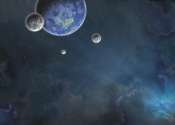Habitable planets around red dwarf stars might not get enough photons to support plant life
In recent years, the number of extra-solar planets discovered around nearby M-type (red dwarf stars) has grown considerably. In many cases, these confirmed planets have been "Earth-like," meaning that they are terrestrial ...









